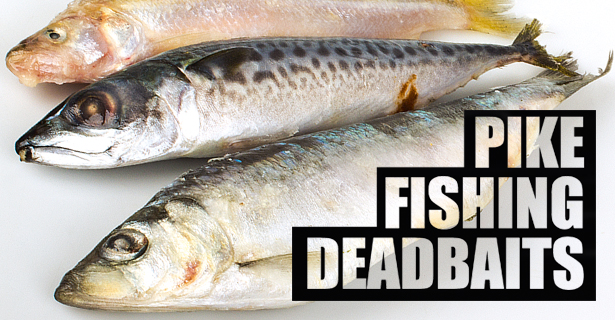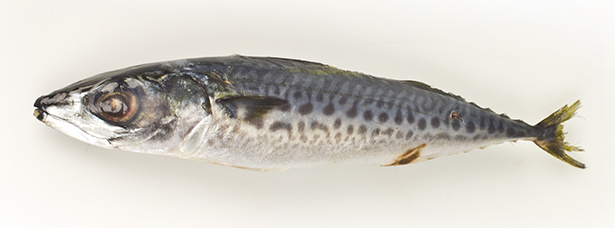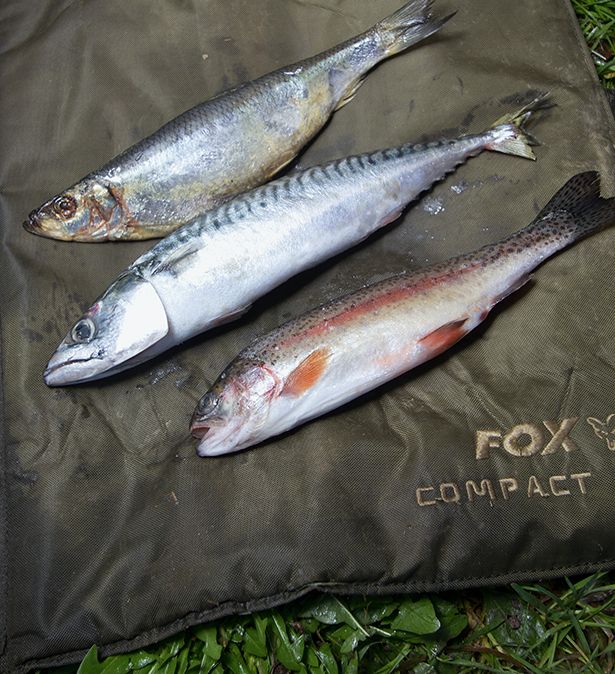Pike Fishing Special - Deadly Deadbaits


Big pike like nothing better than snaffling a static deadbait, but which to choose? Our expert Jon Neafcy talks you through it.
Come the depths of winter, static deadbaiting is a brilliant method for tempting pike on to your hooks. There’s a range of baits to choose from too, including the pike’s natural coarse prey like roach and skimmers, through to salty offerings such as herring and mackerel. But what do you choose and when do you choose it?
Our expert for this feature, Jon Neafcy, has been targeting pike for many years, and exclusively on static deadbaits for the past few. His dedication to the craft of deadbaiting has bought him specimens to over 35lb, so when we asked him to explain a little more about deadbaits we knew we’d get the right answers.
Deadbait Choices There is a wealth of deadbaits available to the modern pike angler, many of which can be purchased from supermarkets or fishmongers. They can also be bought over the counter at many tackle shops, or even by mail order, so you have plenty of options with regards to getting the right bait.
The key to success with deadbaits, in my opinion, is to get them as fresh as you can. Ensure that they are well protected in sealed bags when you freeze them, and after a day’s fishing, when they will have thawed, either throw in what you have left or save them for ‘choppy’ and use them as loose feed for next time.

World’s Best Deadbait? I have been asked many times what, in my opinion, is the best deadbait ever. The simple answer, again in my opinion, is that there isn’t one, due to the massive number of variables to take into account. On ‘hungry’ waters, just like any species, pike will pretty much eat anything thrown at them, making bait choice a moot point.
But on certain waters at certain times of year I have experienced bait preferences from pike, as I’ll explain more about later. However, I will talk you through some of the main deadbaits that I and others use.
Fishing Deads Static deadbaiting is a sedentary method and not as exciting as fishing livebaits or lures, but it does produce the goods. To employ this method your tackle doesn’t need to be fancy, just strong and reliable. With a little modification carp tackle will suffice, just increase your line strength and, obviously, use a wire trace.
Bite indication needs to be flawless as a deep-hooked pike ultimately equals a dead pike. Deadbaits can be legered, float legered, float fished, wobbled, drifted or trolled. The best place to find out about pike and pike fishing is from the Pike Anglers Club Of Great Britain, which has regional meetings throughout the UK.

Mackerel The humble mackerel is possibly the most popular deadbait used. It’s caught more than its fair share of big pike and no doubt its high oil content is a factor in its success. Its cylindrical shape also casts very well and, being tough-skinned, it will stand up to numerous casts.
My very first 20lb-plus pike (I was just 13 at the time) was caught on a mackerel head section. They can also be used whole, or a popular choice is the half mackerel. Tail sections seem most popular with many pikers, although heads work just as well. Mackerel are generally abundantly available, which also helps make them a popular choice, although local availability and cost vary.
As with any oily fish, pikers often like to use mackerel on coloured water as the oil leaking out of them is an obvious attraction for when the pike are hunting on scent. Having said that, they work well on the majority of waters and are often one of my first choices to put on the hooks.

Herring Another firm favourite and again an oily sea fish that can be used whole or in half. They look a little similar to a big roach, which is a plus for the UK pike angler. As an aside I’ve used herring for deadbaits as far afield as Thailand, where I caught a 480lb arapaima at the famous Gillhams Fishing Resort on them.
When a herring deadbait is really fresh it has an abundance of silver scales, add to this the high oil content and there’s plenty of attraction for a pike. I believe herring come into UK seas in winter, making them an ideal bait for our pike season. Again like the mackerel they also have fairly tough skin, so cast well too. You may hear talk of the ‘Norfolk herring’, which many pike anglers swear by. These are bought directly off the fishing boats around Yarmouth way, and you can’t get any fresher than that. On occasion I’ve fished pressured waters where almost everyone has been using mackerel, but not so many using herring – this is really where this deadbait comes into its own, for me.

Lamprey The lamprey is a modern pike fishing phenomenon in terms of its application as a bait. A lamprey looks like an eel, but being a parasite-like creature they have an ugly sucker-type mouth full of teeth to attach themselves to their host and extract its blood – and this is a benefit for it as a deadbait. Their main attraction is that they have a very high blood content. Stab them a few times with a knife to let the blood flow out and it’s an obvious pike magnet.
I know anglers who swear by lamprey, fishing it exclusively on all rods. Due to its popularity and seasonality it can become hard to come by, so it’s advisable to buy in bulk if you really want to give it a good go across winter. It’s not cheap to buy, though, and as the lamprey’s availability decreases at certain times of the year price can increase as a consequence. In terms of casting, as a bait they are tough-skinned so hold on the hooks well. I’ve sometimes reused a lamprey section on the same day and caught several pike on the same piece. Lamprey is said by many to work well in all waters, but for me they work best in waters that have or used to have a number of eels present.

Pollan The pollan is a freshwater whitefish dating back to the ice age. It is a natural population and they are commercially fished in the big Irish loughs. Its main attraction as a deadbait is that unless its swim bladder has been burst by tight vac packing a pollan will generally float, making it ideal as a natural and very effective pop-up pike bait.Be aware, though, that in deep water (25 feet plus) the water pressure may burst the swim bladder, so additional buoyancy may be needed.
Given its natural buoyancy then, pollan is an obvious choice to use in weedy areas where it will stand clear of the bottom cover. However, don’t neglect its use as a pop-up bait in deeper water. These are my number one pop-up deadbaits.

Trout Trout are obviously commercially farmed, both as rainbows and browns, among other variations, meaning they’re readily available. Farmed fish, particularly rainbows, have a very high oil content as they tend to be fed on high-oil pellets, making them very attractive deadbaits.
Some trout waters permit pike fishing in winter – Grafham, Pitsford, Rutland etc – with some such as Chew Valley having become legendary for their pike getting big and fat on the abundance of trout in the venue. Some trout waters will sell you fresh dead trout to fish for pike with, others restrict you to sea deadbaits only, and although sea deads will work well on some trout waters they’re never as effective as trout.
My preference, troutwise, when it comes to trout is the brown trout, probably because they work well as a natural bait on some of the waters I fish that contain the species. On one Scottish loch I fish, the pike were feasting on the brown trout in autumn as the fish entered the shallow water and burns to spawn. In fact, on that particular trip the only deadbaits I had runs on were brown trout, and indeed when I ran out of them, despite having fresh rainbows as a backup, I received no more runs.

Smelt The smelt is another small fish dating back to the ice age. It is light green and white in colour and its unique appeal is that, bizarrely, these fish smell of cucumber. I’ve heard some anglers say that pike have been eating smelt since the ice age and that’s why they work so well, but I think what the smelt offers as a bait is that it’s unique in terms of look and smell.
There is no doubt that the humble smelt is a good pike catcher and offers the angler a useful alternative to the aforementioned baits, but again, though, smelt is seasonal and can be quite expensive. On the hooks it is less dense in its flesh than the likes of mackerel and herring and softer skinned, so is less easily cast. It’s easy enough to pop up though, and being generally a small bait (although some bait companies advertise big smelt) it can work well when the pike are predating on small prey.
Legality Always check the legality of the deadbait you use; for example, salmon cannot be used as bait in Scotland and certain waters in the Lake District national park do not permit the use of any freshwater fish as bait, including migratory fish (sea trout, eels etc). Also, check with the water’s controlling club as to its rules.
